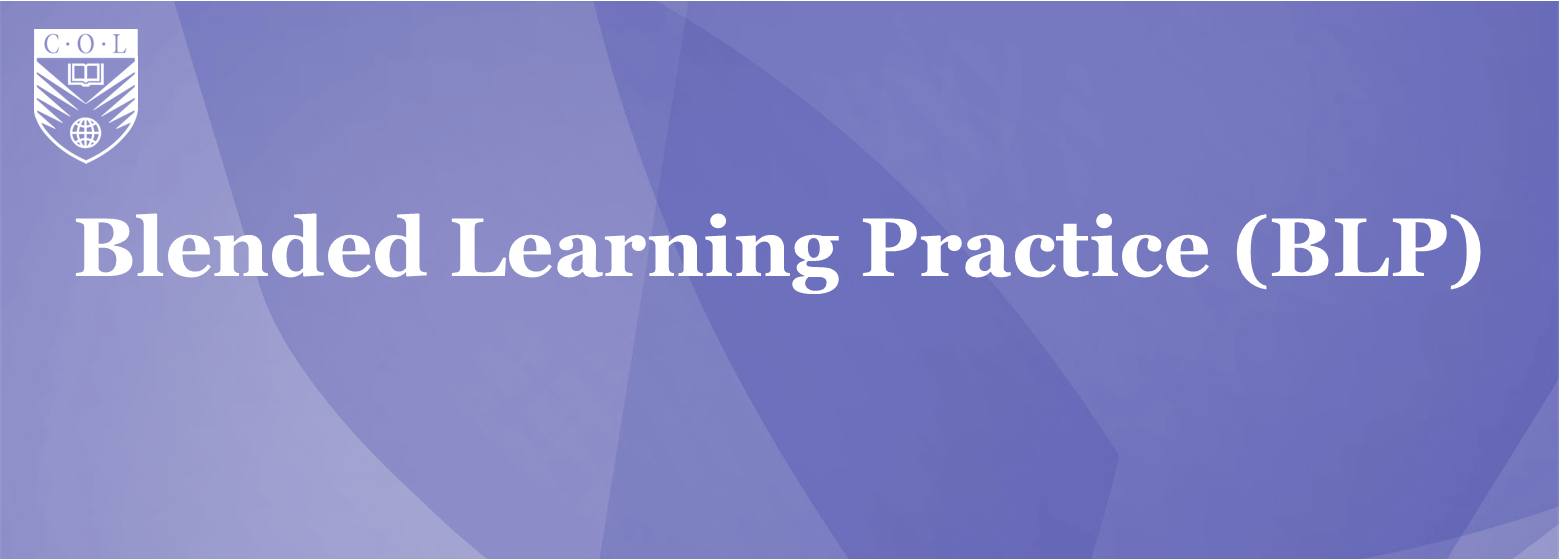The goal of the BLP MOOC is to introduce blended learning as an important and rapidly developing form of education, with an emphasis on the benefits it offers to both educators and students, including greater flexibility and convenience, as well as potential increases in learner creativity and independence.
The course has been designed to assist teachers and other educational professionals to adopt blended learning strategies through a step-by-step constructivist and design-based approach. Throughout the course, you will be able to reflect on decisions taken to provide an authentic learning experience in your own context. It will provide a general discussion of types of blended learning in reference to the level of education, the needs of the students, and the subject being taught. The discussions and associated activities will review pedagogy, materials, and technology usage.
Week 1: Foundations of Blended Learning
- The Growth of Blended Learning
- What is blended learning?
- Blended learning uses
- Benefits of blended learning
- Making blended learning work
- Preparing for blended learning
- Consider creation of individual blended learning designs
- Purposefully integrate in-class and online activities
- Preparing students for blended learning
- Teaching principles that support blended learning
Week 2: Designing Blended Learning
- Using theory to support blended learning practice
- The Complex Adaptive Blended Learning System (CABLS)
- The Community of Inquiry theoretical framework in blended learning
- Creating a Community of Inquiry: What the research tells us
- Seven blended learning structures in education
- Blended learning as technology-enabled learning in the classroom
- Institutions and blended learning
- Understand enticers and barriers to blended learning
- Peer-review instructional design and blended course development plans
- Writing learning objectives and learning outcomes
- Consider how subject matter may influence blended learning
- Student needs assessment
- Aligning assessment and learning objectives
Week 3: Technology and Blended Learning
- Technology in education: An expanded definition
- A note on technological change and obsolescence
- Learning management systems
- Web conferencing
- Digital textbooks
- Blogs and wikis
- Social bookmarking, mashups, and digital storytelling
- Simulations, serious games, and virtual worlds
- ePortfolios
- Learning management systems and virtual learning environments
- Creating learning activities based on blended learning best practices
Week 4: Blended and Online Learning Practice
- Synchronous activities for blended learning
- Examples of synchronous activities for models of blended learning
- Asynchronous activities for blended learning
- Asynchronous activities for models of blended learning
- Practical implications of synchronous and asynchronous activities
- Customize for context and learning design
- Finding, using, and creating open educational resources (OER)
- Useful sources of OER
- Learning assessment strategies available in blended learning
- Evaluating design and delivery of blended learning
- Blended course learnability evaluation checklist
- Community of Inquiry indicators to assess presence in blended learning

